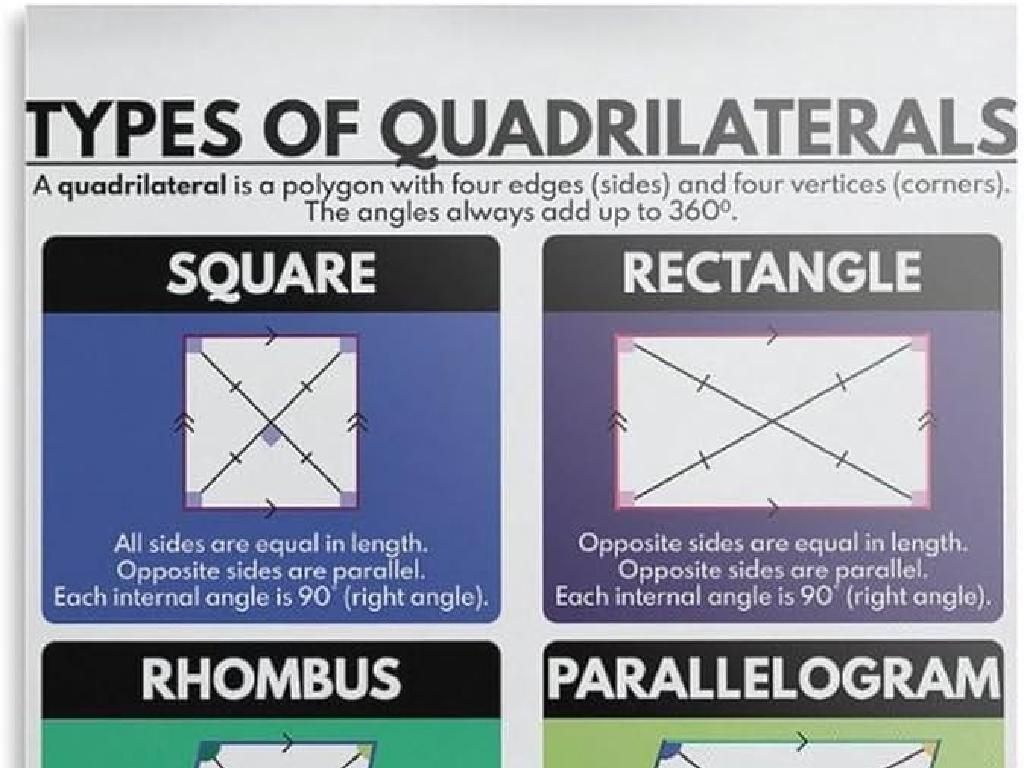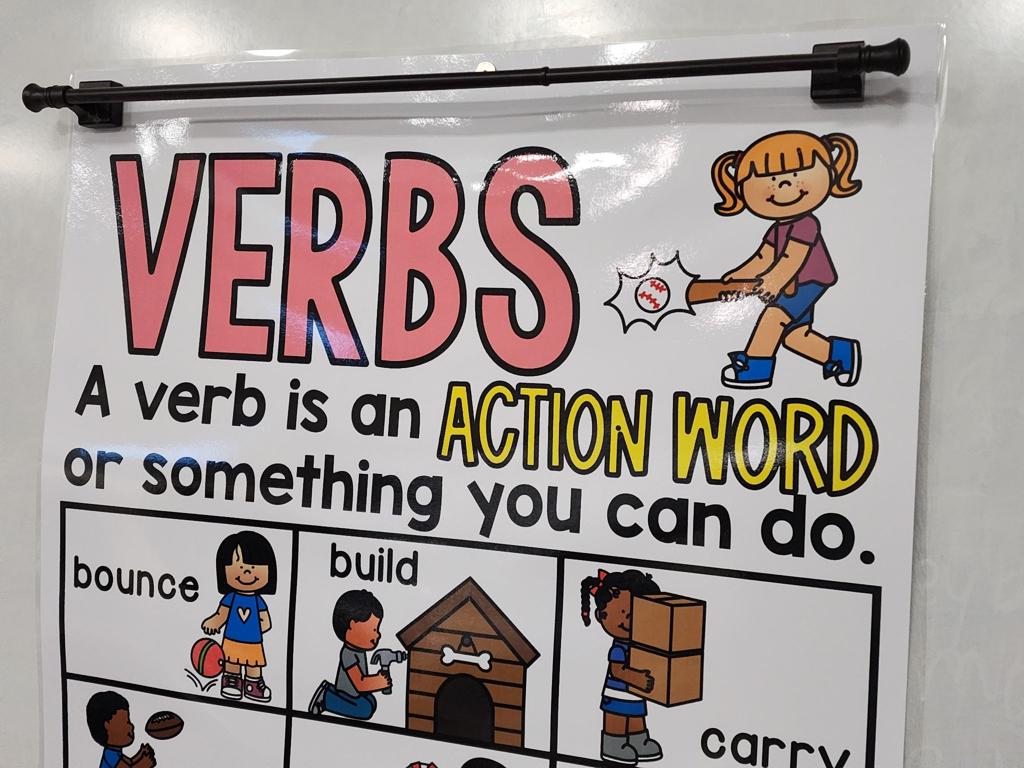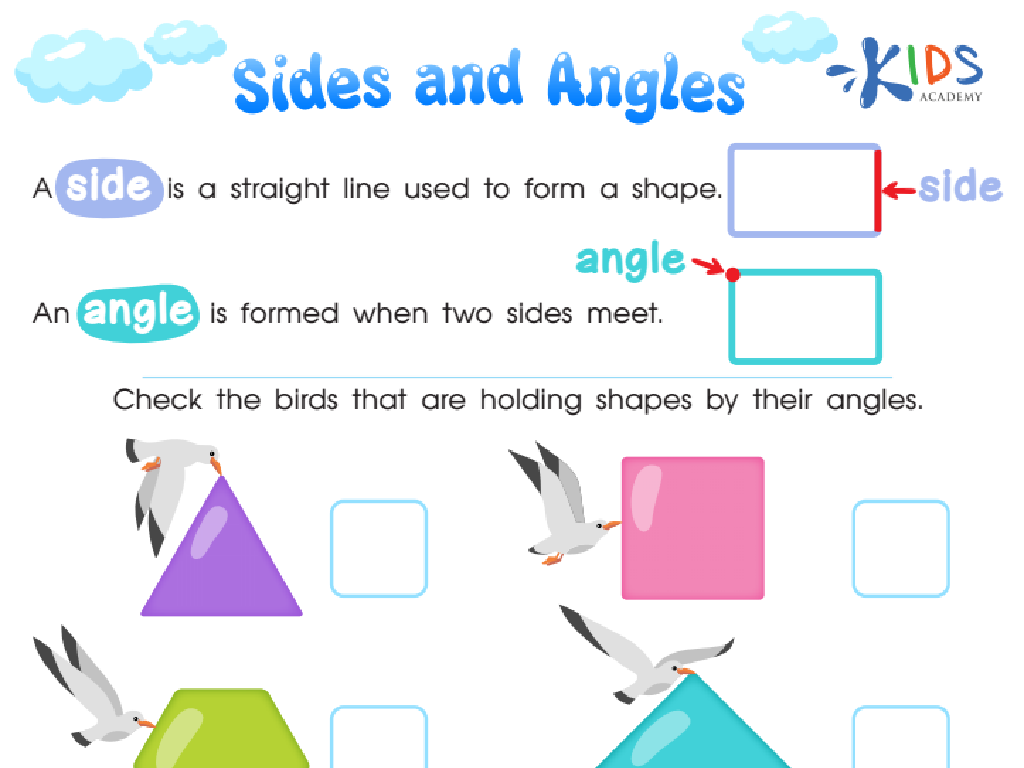Model And Write Subtraction Sentences For Word Problems - Up To 10
Subject: Math
Grade: Kindergarten
Topic: Subtraction Word Problems Up To 10
Summary: Introduce Kindergarten students to subtraction with fun word problems and hands-on activities. This interactive math lesson teaches how to model and write subtraction sentences using everyday objects like apples, ducks, and cookies. Students practice key subtraction terms like "take away" and "minus" while solving problems up to 10. Through stories, finger counting, and games like Subtraction Bingo, children build a strong foundation in early math skills aligned with Common Core standards.
Please LOG IN to download the presentation. Access is available to registered users only.
View More Content
Welcome to Subtraction!
– Subtraction means taking away
– Start with a number, then take some away
– If you have 5 apples and eat 2, you have 3 left
– Solve puzzles by subtracting
– Imagine 10 stars, if 4 disappear, how many are left?
– Practice with subtraction sentences
|
This slide introduces the concept of subtraction to Kindergarten students in a fun and engaging way. Subtraction is explained as ‘taking away’ from a total amount. Start by showing a group of items, then remove some and count what’s left. Use simple word problems that they can visualize, like apples or stars, to illustrate subtraction in real life. Encourage the children to use their fingers or objects to physically take away and count the remaining items. The goal is to make them comfortable with the idea of subtraction before moving on to writing subtraction sentences. For the activity, provide various scenarios where students can practice writing subtraction sentences from word problems.
Understanding Subtraction
– Subtraction means taking away
– It’s like having a set of items and removing some.
– Imagine 10 apples, give some away
– If you start with 10 and give 2 to a friend, how many are left?
– How many apples left?
– Let’s solve it together!
|
This slide introduces the concept of subtraction to Kindergarten students using a relatable example of having and giving away apples. Start by explaining that subtraction is simply the process of taking some things away from a group and seeing what’s left. Use props or visuals of apples to demonstrate this concept. Encourage the students to visualize the scenario where they have 10 apples and give some away. Ask them to guess the outcome before solving it as a class. This interactive approach helps them grasp the basic idea of subtraction in a fun and engaging way. Prepare to guide them through a simple subtraction problem using the apples example to solidify their understanding.
Understanding Subtraction Words
– ‘Less’ means subtraction
– If you have 5 apples and eat 2, you have 3 apples ‘less’.
– ‘Minus’ signals taking away
– 10 fingers ‘minus’ 2 fingers is 8 fingers.
– ‘Take away’ equals subtract
– If you ‘take away’ 4 crayons from 10, you’re left with 6.
– Listen for subtraction words
|
This slide introduces the concept of subtraction to Kindergarten students by focusing on the keywords that indicate a subtraction operation is needed. Emphasize the words ‘less’, ‘minus’, and ‘take away’ as cues to subtract. Use relatable examples such as apples, fingers, and crayons to illustrate the concept. Encourage students to listen for these words in everyday situations and in word problems to recognize when to subtract. Reinforce the idea that subtraction means taking something away, resulting in a smaller number. Practice with real objects in class to solidify understanding.
Let’s Practice Subtraction!
– Start with 5 ducks
– 2 ducks walk away
– How many ducks left?
– Use fingers or objects to subtract 2 from 5
– Count together to find out!
– Practice counting down from 5 to 3
|
This slide is designed to introduce kindergarteners to the concept of subtraction in a fun and interactive way. Use the example of ducks to make it relatable and engaging. Encourage the students to visualize the scenario where 5 ducks are present and 2 decide to walk away. Ask the children to hold up 5 fingers and then put 2 fingers down to represent the ducks walking away. This helps them to physically see and understand the subtraction process. Afterward, count the remaining fingers together to find the answer. Reinforce the concept by using other objects like toys or blocks to subtract and count. The goal is to make subtraction tangible and to practice counting backward.
Writing Subtraction Sentences
– Subtraction sentence elements
– Numbers, a minus sign (-), and an equals sign (=)
– Example with ducks: 5 – 2 = 3
– Starting with 5 ducks, if 2 leave, 3 remain
– ‘Take away’ means subtract
– What’s left after subtraction?
– After taking 2 from 5, 3 ducks are left
|
This slide introduces the concept of writing subtraction sentences to Kindergarten students. Begin by explaining the components of a subtraction sentence, emphasizing the minus sign and equals sign. Use a simple and relatable example, such as ducks in a pond, to illustrate the concept. Explain that ‘taking away’ is another term for subtracting and show how the number of ducks decreases. Encourage the students to visualize the scenario to understand the concept of subtraction. After the explanation, engage the students with hands-on activities where they can physically remove items and count what’s left to reinforce the concept.
Your Turn to Try: Story Subtraction!
– Listen to the subtraction story
– Use subtraction words: ‘take away’, ‘less’
– Words like ‘take away’ or ‘less’ signal subtraction
– Write the subtraction sentence
– Example: 5 apples – 2 apples = 3 apples
– Solve the problem together
– We’ll find out how many are left after subtracting
|
This slide is an interactive class activity designed to engage Kindergarten students in creating subtraction sentences from word problems. Start by telling a simple story that involves subtraction, such as ‘5 ducks were swimming in the pond, and 2 swam away. How many ducks are left?’ Encourage the students to listen for key subtraction words and phrases. Guide them to write the corresponding subtraction sentence on their paper or a classroom board. For example, ‘5 – 2 = 3’. Then, solve the problem as a class, ensuring that each student understands the process. Provide additional support and examples as needed, and praise their efforts to build confidence. Prepare a few different stories to cater to various learning paces.
Story Problem Time: Cookies!
– Start with 10 cookies
– Eat 3 cookies
– How many left?
– Use objects to visualize subtraction
– Write subtraction sentence
– 10 – 3 = ? Let’s solve on the board
|
This slide introduces a simple subtraction word problem involving cookies to make the concept relatable for Kindergarten students. Begin by presenting the problem and asking the students to visualize 10 cookies. Then, engage them by asking what happens if we eat 3 of those cookies. Encourage the students to use their fingers or counters to represent the cookies and physically remove 3, helping them understand the concept of subtraction. Finally, guide them to write the subtraction sentence on the board: 10 – 3 = 7. Reinforce the idea that subtraction tells us how many items are left after some are taken away. For the activity, provide real cookies, pictures, or manipulatives for hands-on learning, and assist them in writing the subtraction sentence.
Class Activity: Subtraction Bingo
– Let’s play Subtraction Bingo!
– Solve subtraction problems
– Use subtraction sentences to find answers
– Cover the number on your card
– Each correct answer lets you cover a number
– Aim to cover all numbers first!
|
This interactive game is designed to help Kindergarten students practice subtraction in a fun and engaging way. Prepare bingo cards with numbers up to 10 in advance. During the activity, call out subtraction word problems appropriate for their level (e.g., ‘You have 5 apples and you eat 2. How many do you have left?’). Students will solve the problem and cover the correct number on their bingo cards. The first student to cover all their numbers shouts ‘Bingo!’ and wins a small prize. This game encourages quick thinking and application of subtraction skills. Possible variations of the game can include team play, timed rounds, or using different themes for the word problems to maintain interest.
Subtraction Success!
– Congratulations on learning subtraction!
– Subtraction means taking away
– If you have 5 apples and eat 2, you have 3 left.
– Practice is key to improvement
– Keep practicing subtraction at home!
– Try subtracting toys, candies, or fingers!
|
This slide is a celebratory conclusion to the lesson on subtraction word problems up to 10. Reinforce the concept that subtraction is simply the process of taking away one number from another. Encourage the students to continue practicing at home with practical examples, such as using toys or candies to visually represent subtraction problems. Remind them that the more they practice, the better they will get at understanding and solving subtraction problems. Offer praise for their hard work during the lesson and motivate them to keep practicing with enthusiasm.





